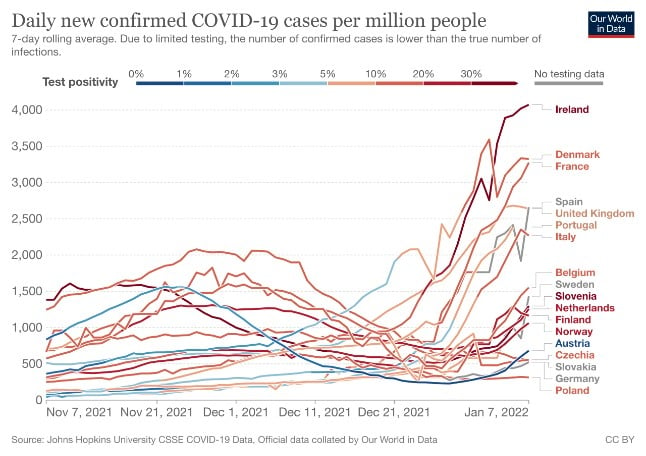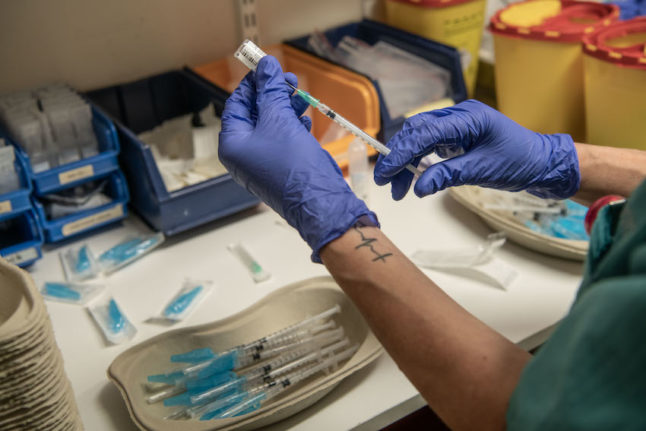How many cases, hospitalisations and deaths are there in Denmark?
Denmark registered 12,588 new cases in the 24 hours leading up to 2pm on Saturday, down from the 18,261 registered on in the day leading up to Friday at 2pm, which was itself a decline from the record 28,283 cases recorded on Wednesday.
The cases were identified by a total of 174,517 PCR tests, bringing the positive percentage to 7.21 percent, down from the sky high rates of close to 12 percent seen in the first few days of January.
The number of cases over the past seven days is lower than the week before in almost every municipality in Denmark, with only Vallensbæk, Aarhus, Holseterbro, Skanderborg, Hjørring, Vordingborg, Ringkøbing, Kolding, Assens, Horsens, Thisted, and Langeland reporting rises.
Hospitalisations have also started to fall, with some 730 patients being treated for Covid-10 on Saturday, down from 755 on Friday. On Tuesday, 794 were being treated for Covid-19 in Danish hospitals, the highest number since the peak of the 2020-21 winter wave.
The only marker which has not yet started to fall is the number of deaths, which tends to trail infections and hospitalisations.
In the 24 hours leading up to 2pm on Saturday, Denmark registered 28 deaths with Covid-19, the highest daily number recorded since 20 January 2021, when 29 people died with Covid-19 (although Denmark’s deadliest day was the 19 January 2021, when 39 people died).
How does Denmark compare to other countries in Europe?
Over the last seven days, Denmark has had the highest Covid-19 case rate of any country in Europe bar Ireland. The number of new infections in the country has climbed steadily since the start of December, apart from a brief fall over Christmas.

So does this mean the omicron wave has peaked?
Maybe, although experts are not sure.
“Of course, you can hope for that, but I’m not sure that is the case,” said Christian Wejse, head of the Department for Infectious Diseases at Aarhus University Hospital. “I think it is too early to conclude that the epidemic has peaked.”
He said that patients with the Omicron variant were being discharged more rapidly on average than had been the case with those who had the more dangerous Delta variant.
“Many admissions are relatively short-lived, thankfully. This is because many do not become that il, and are largely hospitalized because they are suffering with something else. And if they are stable and do not need oxygen, then they are quickly discharged again.”
Denmark’s Prime Minister Mette Frederiksen said during a visit to an event held by the Social Liberal party that the latest numbers made her even more optimistic about the coming month.
“We have lower infection numbers and the number of hospitalisations is also plateauing,” she said. “I think we’re going to get through this winter pretty well, even if it will be a difficult time for a lot of people, and we are beginning to see the spring ahead of us, so I’m actually very optimistic.”
She said that she had been encouraged by the fact that Omicron was a “visibly less dangerous variant if it is not allowed to explode.”



 Please whitelist us to continue reading.
Please whitelist us to continue reading.
Member comments